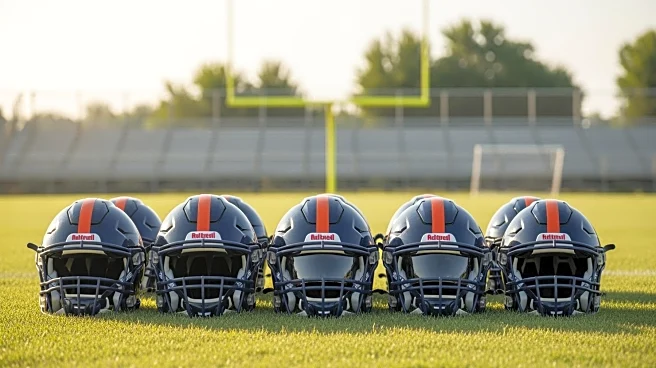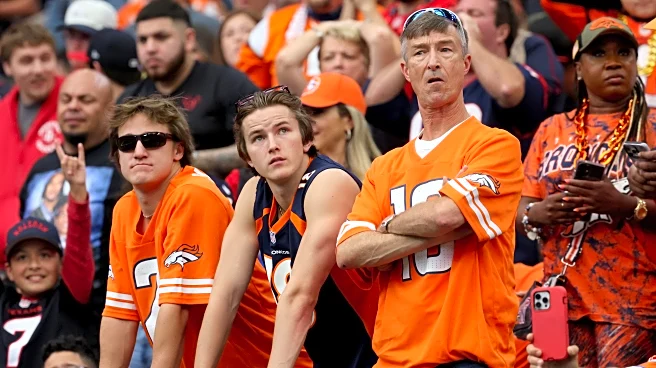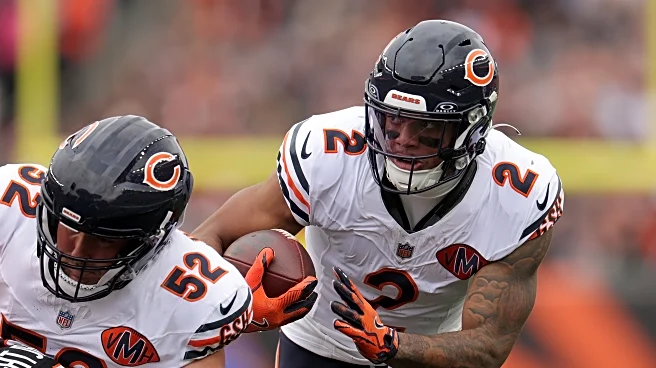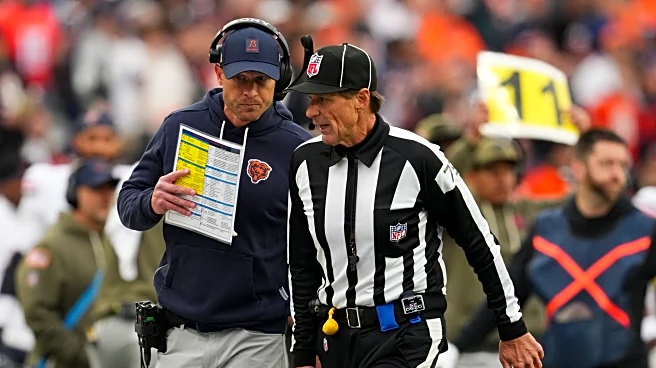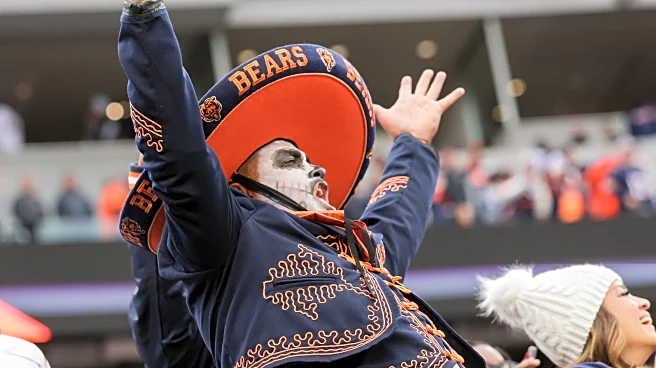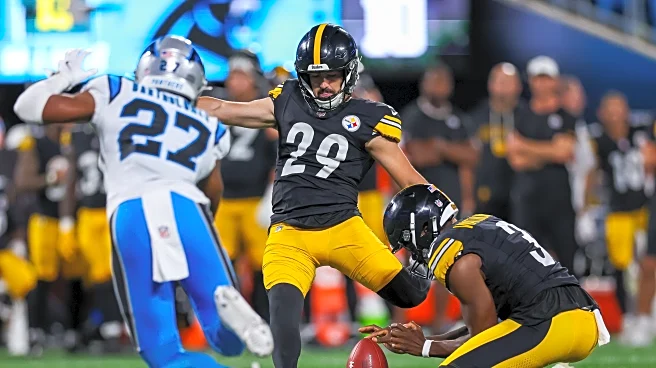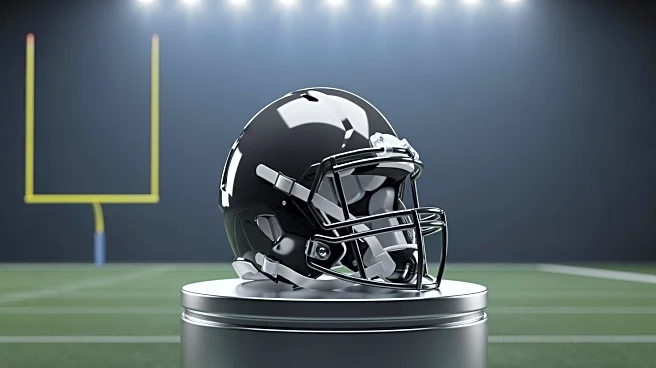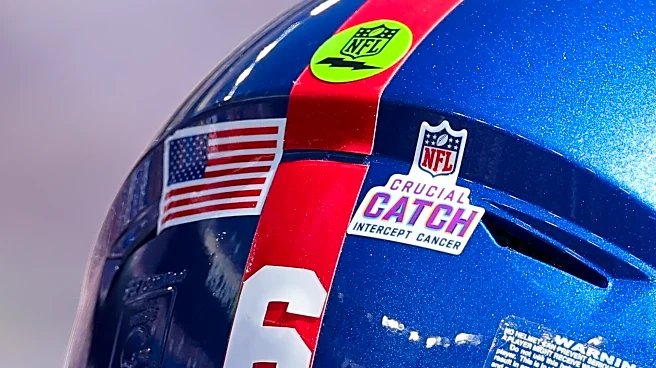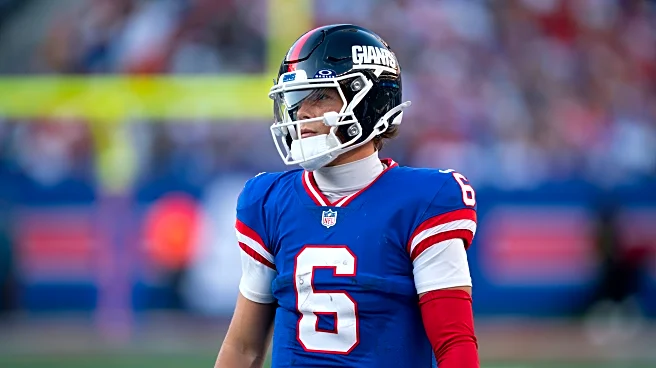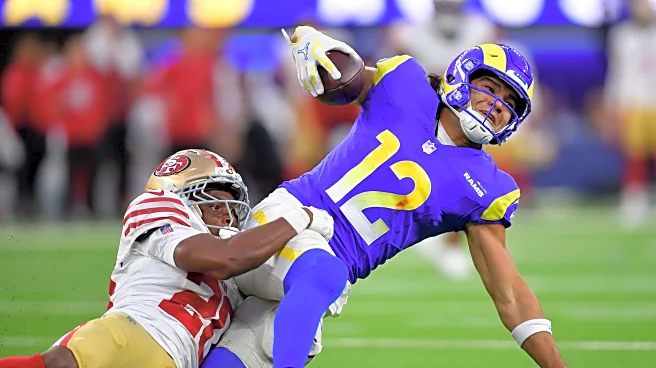What's Happening?
The Chicago Bears have made several adjustments to their practice squad ahead of their upcoming game against the New York Giants. On Saturday, the team released wide receiver Miles Boykin and signed linebacker Carl Jones Jr., who had cleared waivers after
being released earlier in the week. Jones has contributed significantly on special teams, appearing in seven games this season and recording 10 tackles, which ties him for the second most on the team. Additionally, the Bears elevated tight end Stephen Carlson to the active roster from the practice squad. This move comes as tight end Durham Smythe was listed as questionable due to a calf injury. The Bears are also monitoring the status of running back D’Andre Swift, who is listed as questionable but is expected to play.
Why It's Important?
These roster changes are crucial for the Bears as they prepare to face the New York Giants. The elevation of Stephen Carlson to the active roster addresses the potential absence of Durham Smythe, ensuring the team has adequate coverage at the tight end position. The signing of Carl Jones Jr. bolsters the special teams unit, which is vital for maintaining competitive performance in upcoming games. These moves reflect the Bears' strategic approach to managing injuries and maintaining team depth, which is essential for their playoff aspirations. The decisions made by the Bears' management could impact their performance in the game against the Giants and influence their standing in the league.
What's Next?
The Bears will face the New York Giants, and the effectiveness of these roster changes will be tested. The team will need to monitor the health of key players like Durham Smythe and D’Andre Swift closely. Depending on the outcome of the game and the performance of newly elevated players, further roster adjustments may be necessary. The Bears' management will likely continue to evaluate player performance and health to ensure the team remains competitive throughout the season.
Beyond the Headlines
The Bears' roster moves highlight the challenges NFL teams face in managing player health and maintaining competitive depth. These decisions are not only about immediate game performance but also about long-term team strategy and player development. The ability to adapt to injuries and make strategic roster changes is a critical component of successful team management in professional sports.
